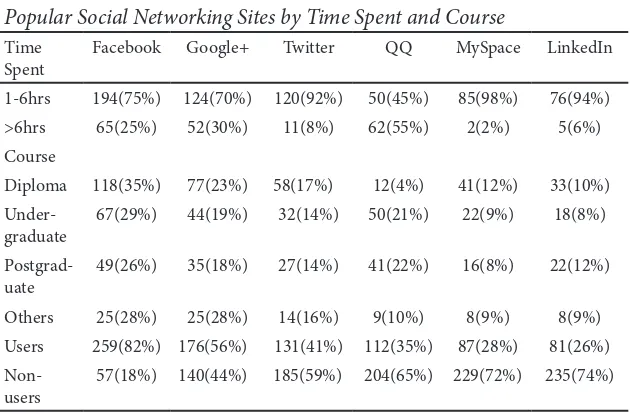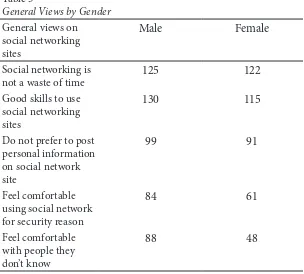The Usage and Online Behavior of Social Networking Sites among International Students in New Zealand
Full text
Figure




Related documents
Utility companies that focus on maximizing the performance of their core business, use a repeatable model to invest selectively in close adjacencies, and proactively monitor
Farmers who were currently using no-till farming, cover crops, and tile drainage were also more likely to plan to increase their use of these practices in response to increased
We present a matching model with temporary and permanent jobs where (i) the gap in firing costs and (ii) restrictions in the use of fixed- term contracts play the central
And in order to better situate some aspects of Theodoros Terzopoulos’ theatre, let me copy Butler’s title, create here and now a perspective called “Energy that matters,” and
RESULTS — Psychosocial factors, i.e., high parenting stress (odds ratio 1.8 [95% CI 1.2–2.9], P ⬍ 0.01), experiences of a serious life event (2.3 [1.3– 4.0], P ⬍ 0.01),
In this paper, we show that considering the classic Allingham and Sandmo (1972) tax compliance problem under Rank-Dependent Expected Utility (RDEU) axiomatics provides a simple
countries that experienced hyperinflations display substantially lower rates of inflation than similar countries lacking the same experience: hyperinflations act by reducing the
